
First Tae Kwon Do Western Australia held its winter grading examination recently. Master Vernon Low and Chief Instructor John O’Brien flew to Perth from Adelaide, joining Chief Instructor (WA) Dane Meade and the WA instructors and black belt members in this major event. FTKD WA students attended as candidates to be tested for promotion in rank, under the careful eye of Master Low.
A key part of most gradings is the demonstration of basic Tae Kwon Do techniques, such as blocks and kicks. In the photographs below, we see candidates in action both in a unified group (with all candidates executing the same techniques in the same direction at the same time) and in partnered exercises (where one partner punches and then stops, while the other partner blocks or evades, and then counter-attacks). In some exercises, candidates execute an established, long sequence of techniques from memory; in English, we would typically refer to these as patterns. A key goal here is to see how well the candidates can execute the fundamental techniques of this martial art.
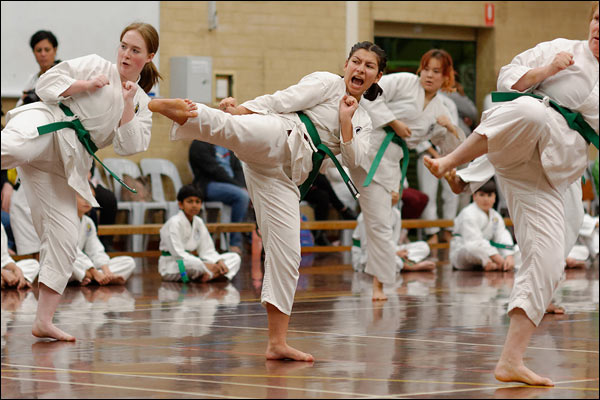






Through the coloured belt ranks (white, yellow, green, blue, brown), gradings are relatively short. To earn admission into the black belt ranks (advanced ranks), and then to progress through the ranks (referred to as Dan or degrees), gradings are significantly longer, more intensive, and far more rigorous. Where it may take a few months of training to advance from one coloured belt rank to the next, it takes years of training to advance from one black belt rank to the next.
The black belt candidates at the recent grading have been training for many years just to get to this stage. Like the coloured belt candidates, these members had to demonstrate basic techniques, but to a higher standard and using more technically demanding techniques, such as jumping kicks.


When it comes time for partnered exercises in a black belt grading, candidates’ partners will be instructors and black belt members. In the photographs below, a 2nd Dan instructor serves as the demonstration partner for a black belt candidate. Unsurprisingly, the speed, precision, and power of the techniques will be at a high level and much closer to an actual physical assault situation, requiring that candidates give their utmost concentration and move as if their lives depended on it.


Multiple rounds of free sparring are the norm for a black belt grading, where each candidate spars non-stop at high intensity against instructors and black belt members. Usually, there will be several rounds of one-on-one sparring, and then several rounds of two-on-one or greater sparring. At this particular grading, candidates eventually moved to five-on-one sparring (i.e., five black belt members attacking the same candidate at the same time). Most people find free sparring to be a daunting challenge, even though it is done with control.


Despite physical exhaustion, candidates then had to reassert mental clarity and focus as they moved to the breaking tests (also known as destruction tests). Apart from a basic set of core techniques, candidates may be required to execute some techniques or variations on techniques that they have not been forewarned about. (One basic variation could be to execute a kicking technique with a jump, rather than from a standing position.) As with the basic exercises mentioned above, a key aim is to test how well candidates can execute their fundamental Tae Kwon Do techniques.

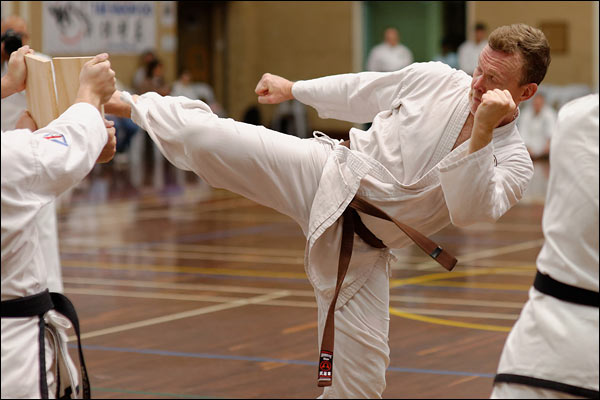
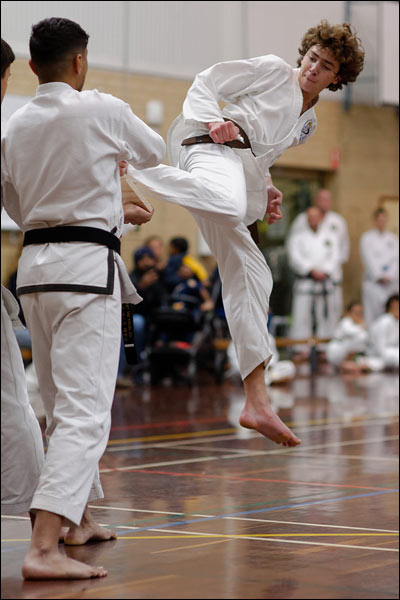







If all has gone well, each successful candidate receives a new black belt from the examiner, Master Vernon Low, and a rank certificate from Chief Instructor (WA) Dane Meade.


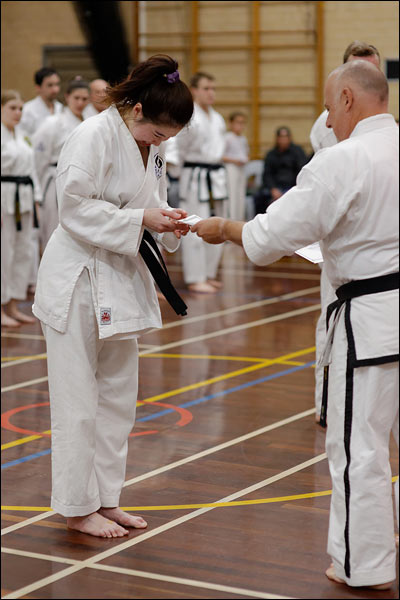
In the photograph below, we see Master Low (far left), Chief Instructor O’Brien (far right), Chief Instructor Meade (second from right), and the four new 1st Dan members and two new Junior Black Belt members promoted recently. In FTKD, Dan ranks are marked by white bars on the belt, with each bar marking one Dan. Junior Black Belt members have no Dan bars, 1st Dan members have one Dan bar, 2nd Dan members have two Dan bars, and so on.

It goes without saying that admission to the FTKD black belt ranks is a high honour, and something not easily won. A common misunderstanding seems to be that ‘black belt’ in one martial art style or organisation means the same thing as ‘black belt’ in another martial art style or organisation. The meaning, requirements, and standards can differ significantly, so while it may be factually true that two people are each wearing a (literal) black belt that they have legitimately earned in their respective styles or organisations, it would be unsafe to assume that their skill, understanding, or practical effectiveness would necessarily be equivalent.
Following the black belt gradings, the last grading session of the day saw senior coloured belt members taking their tests. In recent years, breaking tests have been established as standard requirements for candidates seeking to enter the most senior coloured belt rank, though not to the same level as for those applying for Junior Black Belt or 1st Dan ranking.

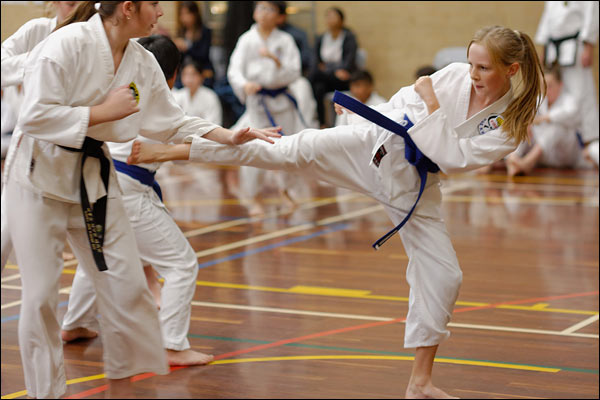

Congratulations to all members who received promotions from Master Low, and particularly those promoted into the black belt ranks after their many years of hard training.